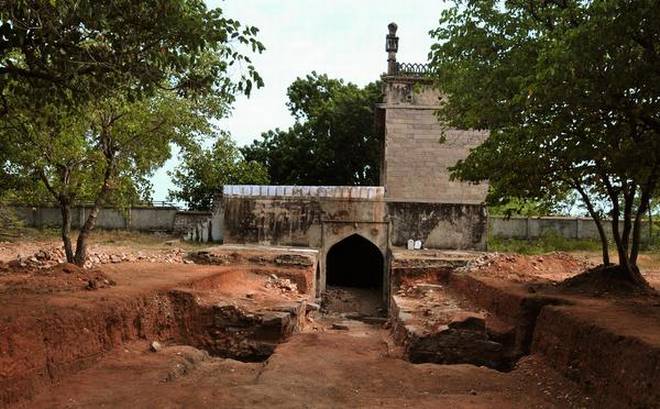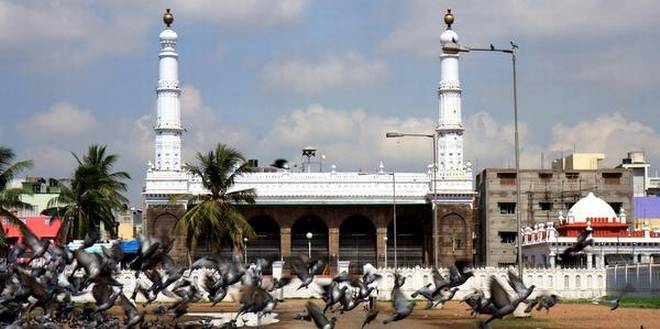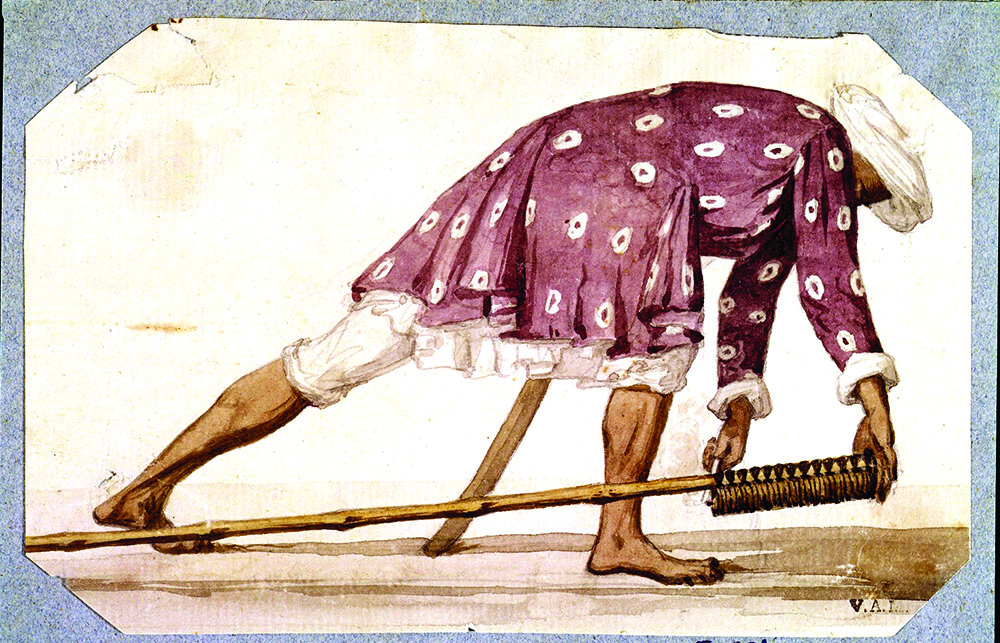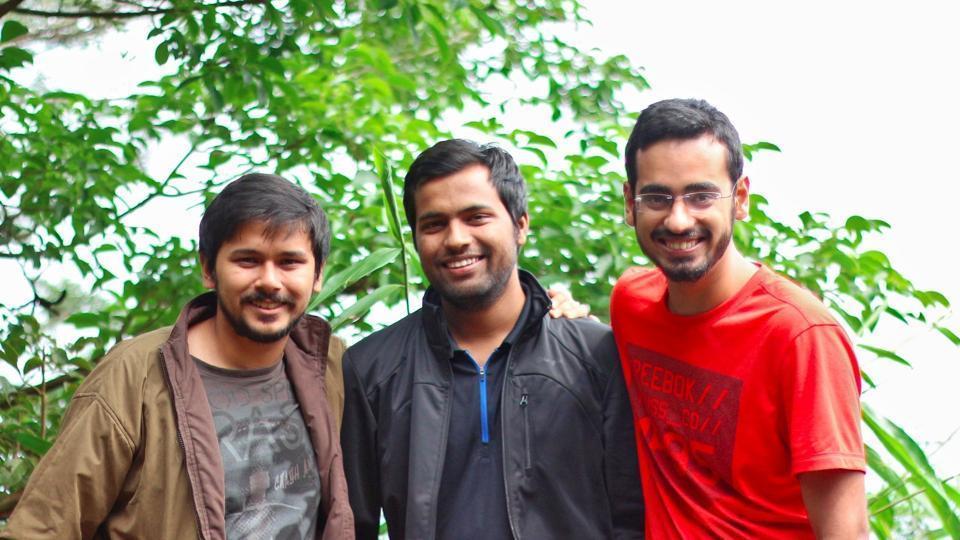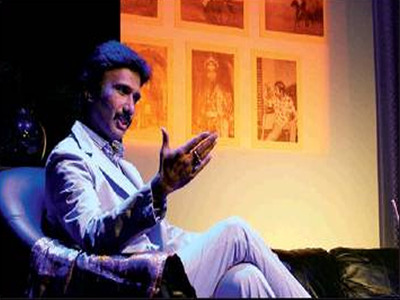My uncle had the most eclectic collection of books. He bought volumes on chemistry, Russian folktales, Andalusian cooking, Mandarin grammar, sericulture; he didn’t care about the subject, it was the artwork in them that appealed to him. That’s how I too got attached to ’60s pulp art, most of which was European or American; fascinating but foreign.
Then, one fine day, I came across a booklet on N.A Ansari’s film Tower House, and couldn’t take my eyes off the cover. It was done in quintessential ’60s style, which of course made sense because it was a ’60s film. The cover had actor Shakila, in a torn white nightgown, holding a chair, even as a pair of hands tried to grab her.
This artwork is what drew me to Ansari’s cinema. His films had everything I enjoyed. They were mostly thrillers that frequently started out with faux hauntings. Soon the suave detective would take over and all the staples would be in place. Romance, action, comic sub-plot, the Anglo-Indian vamp, cabaret, a few red herrings, poignant family moments, and a team of really bad ‘bad guys’. I used to watch them while eating dinner and found great comfort in their predictability. It was very similar to the drive-in cinema in North America, only India did not have the concept of drive-ins then. They were your classic B-rated thrillers, engaging and very watchable.
One may argue with this categorisation because Ansari always worked with mainstream actors like Pradeep Kumar, Ajit, Balraj Sahni and Johnny Walker. The films were fairly well-produced, the music was decent, and some of them did good business at the box office as well. My reasons for comparing them to drive-in cinema are primarily based on the content and the unapologetic slapdash treatment of it. The stories were straightforward and most of the characters were two-dimensional. However, there was one distinguishing feature in almost all of his films. The arch-villain’s character was well-written and nuanced. It is no surprise that Ansari himself played the villain frequently, and he was easily the most attractive part of the film. No matter how shoddy the rest of the film, Ansari’s part would always be well done.
For example, in Tower House, the writing is very inconsistent and the two mysteries are actually disconnected. The main story revolves around a haunted tower where the ghost of Shakila’s mother reenacts her suicide every night. Even though Shakila and her father try to live a normal life, the rumoured haunting of the tower continues to affect their lives. The first 30 minutes of the film focus on the investigation of the haunting. After that, the emphasis shifts to a mysterious stranger with an eye-patch, played by Ansari himself, who suddenly arrives at their house. The movie then becomes his backstory, and another parallel mystery begins.
Even though the stranger claims to be an old family friend, it becomes evident that he is plotting something frightfully evil. But once again, we are left without answers when the stranger gets killed by a tiger and, without further explanation, we dive straight into an unrelated comic sub-plot. Later, it turns out that Ansari’s character had masterminded the whole tower house mystery by capturing Shakila’s mother and throwing actual dummies every night, to recreate the suicide. We never find out why he was doing it. All we are told is that he is tremendously wicked. This film contains all of Ansari’s common elements including my personal favourite, the Anglo-Indian vamp called either Rita, Rosie, or Lily, and always played by Nilofar.
The consistent illogicality is what made Ansari’s films so entertaining. The synopsis card of Zindagi Aur Maut (1965) encapsulates its essence: “Life & death two common phenomenon associate with all living beings. But when the calamity is national embracing the whole nation, it is not just the few individuals who die but thousands, lacs and even millions. It is to avoid such disasters hand-picked, super courageous, intelligent men work round-the-clock to uncover plots, treacheries, spys espionage…. ESPIONAGE…..”
Ansari’s most talked about, and complicated, film is Wahan Ke Log (1967). It is an unusual film, an interesting blend of a ghost and thieving aliens. In one plot, there are aliens who come down from Mars in flying saucers and steal diamonds from rich men. If the men resist, they are fatally shot with laser guns. There is a scientist called Professor Chakravarthy (played by Ansari himself) who claims he has made a machine through which he can communicate with the aliens.
The second plot is about Chakravarthy’s son, Anil (once again, Ansari), an evil genius who has invented a machine that can control people through a locket. Of course, Anil is assisted by Margaret, played by none other than Nilofer. Their hobby is blowing up people and cars and bragging about their wickedness. Anil has only one threat, a brilliant secret agent played by Pradeep Kumar.
The third plot involves the secret agent and his relationship with a 200-year-old ghost of a princess. Eventually, it turns out that Anil, after murdering his father, bought an island near Mumbai. He used it as a base to control spaceships that were used to steal diamonds from rich men in Mumbai. The Martians were robots he had designed to get rid of his opponents and steal their money. His brilliant project was being funded by an unnamed enemy country. The ghost story is also solved when it turns out that the ghost is a real girl, who just favoured an unusual courtship.
It would be imprudent not to mention Black Cat (1959), another spy thriller where the lead actor was Sahni, the last name anyone would associate with a ‘B’ thriller. It is important to bear in mind that Sahni’s presence doesn’t change the basic fabric of Ansari’s films. It contains all the Ansari staples, including Nilofar as Lily.
The writer is a historian based in Queen’s University, Canada. Watching old Bollywood films keeps her going.
source: http://www.thehindu.com / The Hindu / Home> Entertainment> Movies> Odd Film Out / by Aditi Sen / April 14th, 2018


